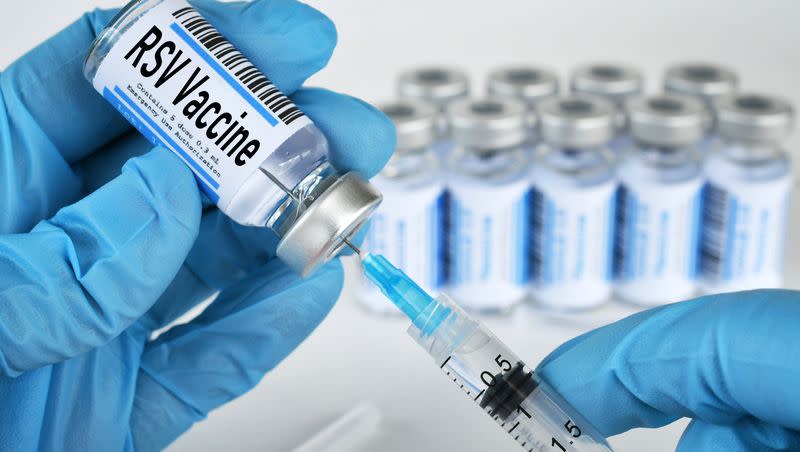RSV on the rise: What you need to know about symptoms and precautions

Respiratory syncytial virus, known as RSV, is so common that most children have had it by their second birthday, the Deseret News previously reported.
The illness often mistaken for the common cold is making a comeback this fall as numbers have been historically lower following COVID-19 and the precautions made to reduce the share of infection, according to a Health Alert Network statement released by the Centers for Disease Control and Prevention.
What is RSV?
RSV is a virus that primarily attacks the lungs. People cannot gain immunity from it and can have it repeatedly in their lifetime, per the American Lung Association.
“The virus spreads easily through air droplets when a person coughs or sneezes near you. The virus also passes through direct contact like shaking hands and can live for hours on hard objects like countertops and crib rails,” per the Mayo Clinic. “If you touch your mouth, nose, or eyes after touching an infected object, you’re likely to pick up the virus.
Adding that in severe instances, “RSV infection can spread to the lower respiratory tract, causing pneumonia or bronchiolitis — inflammation of the small airway passages entering the lungs,” the Mayo Clinic said.
Symptoms of RSV
People of any age can get infected with RSV. However, symptoms tend to be milder in adults than in young children, elderly adults and people with weakened immune symptoms.
Early symptoms, according to Cedars-Sinai Medical Center, include:
Fever.
Cough.
Sneezing/runny nose.
Trouble breathing .
“Serious cases of RSV can lead to more dangerous conditions, including bronchiolitis (inflammation of the small airways in the lungs) and pneumonia (infection of the lungs), per Health Partners.
Adding that severe symptoms can include:
High irritability.
Fatigue.
Lack of appetite.
Severe breathing problems.
“After exposure to the virus, symptoms typically appear in about four to six days. While the symptoms resemble the common cold in adults and older children, RSV can take a more serious turn, especially in vulnerable populations,” per Newsbreak.
Related
Ways to stay immune from RSV
In the CDC’s Health Alert Network statement, physicians and clinics are recommended to create preventative care options for their patients and that two new vaccines are available for adults.
“For adults ages 60 years and older, clinicians should offer a single dose of an RSV vaccine, either RSVPreF3 (Arexvy, GSK) or RSVpreF (AbrysvoTM, Pfizer), based on shared clinical decision-making between the health care provider and the patient,” the statement said.
For children and infants, “Monoclonal antibody products, including a new, long-acting product, nirsevimab (BeyfortusTM, Sanofi and AstraZeneca), are available to protect infants and some young children at higher risk for severe RSV disease,” the CDC said, “For all infants ages younger than 8 months, and infants and children ages 8–19 months who are at increased risk of severe RSV, clinicians should start to offer nirsevimab when it becomes available.” Availability is expected in October, according to the statement.
The CDC reported that every year, an estimated 58,000-80,000 children younger than 5 are hospitalized from the severity of their RSV symptoms.
In order to prevent the increased spread of RSV, washing your hands with soap for at least 20 seconds is recommended, and avoid touching your face if your hands have not been cleaned, according to experts.
When medical attention is needed
RSV can normally be treated with over-the-counter medication at home, but for more severe cases, it is important to seek attention from a medical professional.
If your child’s symptoms do not seem to be improving, it’s better to be safe than sorry and call your pediatrician.
If the following symptoms are occurring, Emergency Physicians recommend a visit to the emergency room:
Breathing is slowed and not improving.
Skin color appears blue, specifically on the lips and nail beds.
Fever higher than 100 if the child is under two months with additional symptoms.
“After exposure to the virus, symptoms typically appear in about four to six days. While the symptoms resemble the common cold in adults and older children, RSV can take a more serious turn, per Newsbreak. Adding that “If there are signs of dehydration, like not peeing as much or having a dry mouth, it’s a good idea to see a doctor.”

